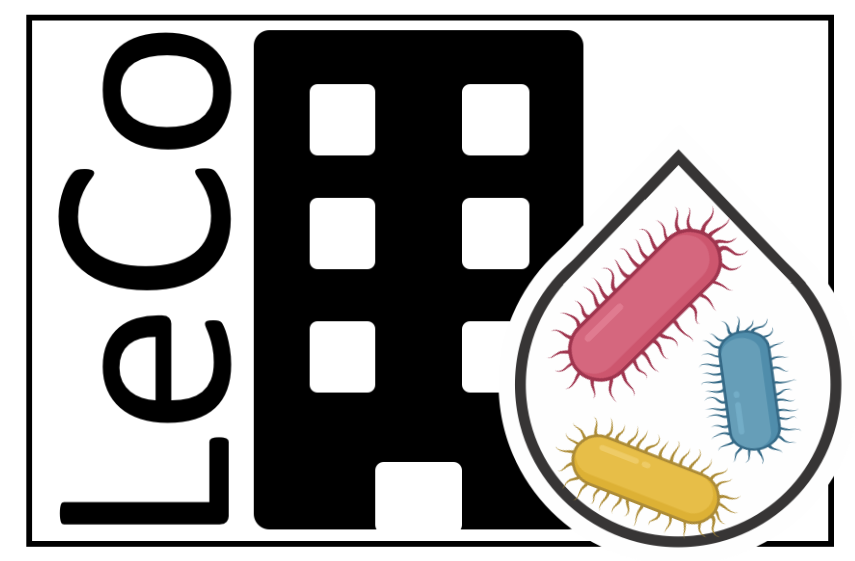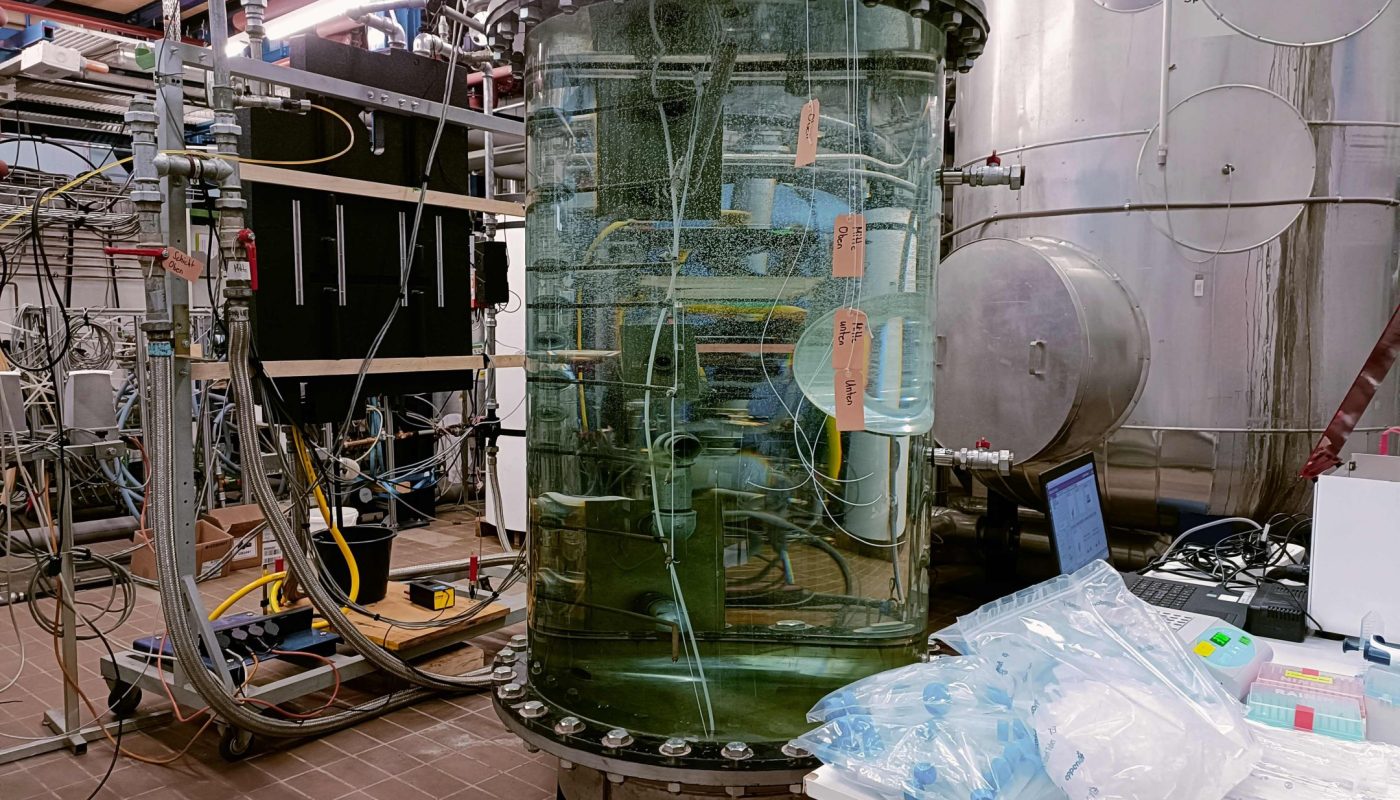A good water boiler/heater establishes an energy-efficient thermal barrier against opportunistic pathogens in building distribution systems. While this appears to be straightforward, evaluating the temperature distribution and resulting water dynamics within the boiler during the heating process is more complex, and depends on boiler design and operation. It is important to determine whether the bacteria remain in a critically hot environment long enough for sufficient deactivation or if unwanted thermal or hydraulic mixing accelerates their transport to the boiler outlet.
As part of the LeCo project, HSLU and Eawag researchers collaborated to visualize and test the fluid dynamics in boilers under different conditions. The test object is a transparent hot water storage system at HSLU, fitted with multiple thermal sensors. In a first experiment, HSLU students implemented a strategy by coloring the water in the inlet, and then documenting the distribution of the coloured water relative to the heating method and measured temperatures.In a second experiment, a group of Eawag-researchers joined the HSLU-researchers in Luzern to measure the impact of fluid dynamics on bacteria distribution and disinfection using flow cytometry. With this method, the bacterial cells are stained with two different fluorescent DNA dyes. The emitted fluorescence can then be quantified using a flow cytometer. By analyzing the fluorescence signals and their intensities, it is possible to determine whether the cells were damaged by the high boiler temperature.
Research is still ongoing to further explore the implications of fluid dynamics on bacteria distribution and disinfection in water boilers. These findings will be directly incorporated into the further development of building technology, particularly in the optimization of the design of heating water systems to reduce the risk of Legionella contamination.
Below some preliminary impressions:






